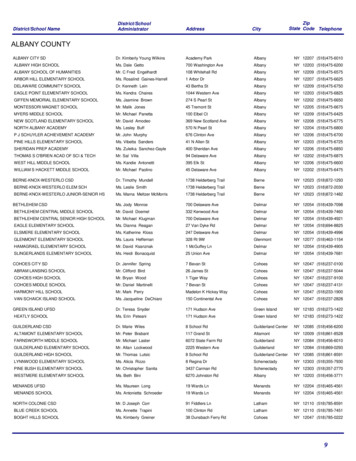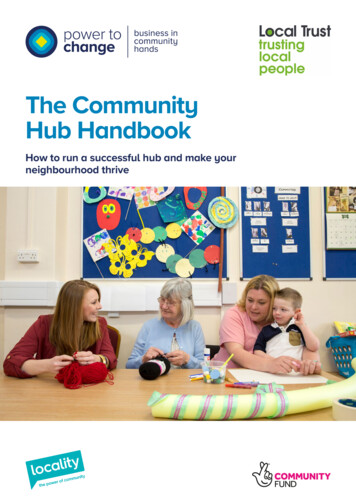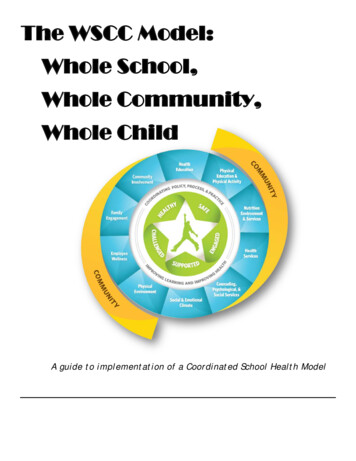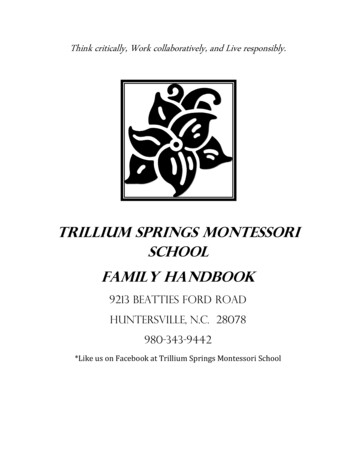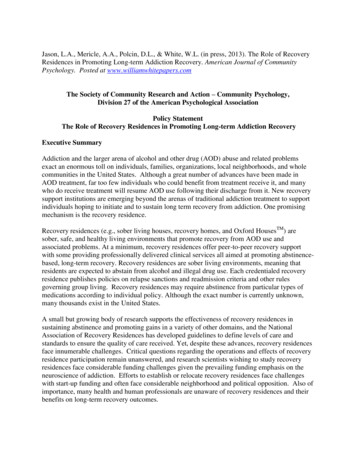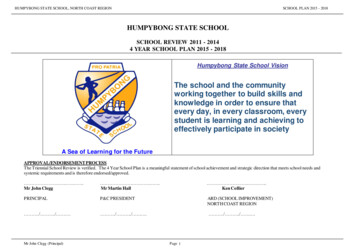
Transcription
HUMPYBONG STATE SCHOOL, NORTH COAST REGIONSCHOOL PLAN 2015 - 2018HUMPYBONG STATE SCHOOLSCHOOL REVIEW 2011 - 20144 YEAR SCHOOL PLAN 2015 - 2018Humpybong State School Vision“Insert School Logo”The school and the communityworking together to build skills andknowledge in order to ensure thatevery day, in every classroom, everystudent is learning and achieving toeffectively participate in societyA Sea of Learning for the FutureAPPROVAL/ENDORSEMENT PROCESSThe Triennial School Review is verified. The 4 Year School Plan is a meaningful statement of school achievement and strategic direction that meets school needs andsystemic requirements and is therefore endorsed/approved. .Mr John Clegg .Mr Martin Hall .Ken CollierPRINCIPALP&C PRESIDENTARD (SCHOOL IMPROVEMENT)NORTH COAST REGION ./ ./ . ./ ./ . ./ ./ .Mr John Clegg (Principal)Page 1
HUMPYBONG STATE SCHOOL, NORTH COAST REGIONSCHOOL PLAN 2015 - 2018TABLE OF CONTENTSSECTION 1PAGEStatement of Purpose. 3SECTION 2School Review 2011-2014 . 4a) Processb) Review of School Strategic Plan 2011-2014c) Major Findings – achievements / areas for improvementSECTION 3The School Context . 8SECTION 4School Plan 2015-2018 . 29SECTION 5Appendices 34Mr John Clegg (Principal)Page 2
HUMPYBONG STATE SCHOOL, NORTH COAST REGIONSECTION 1SCHOOL PLAN 2015 - 2018STATEMENT OF PURPOSEMotto A sea of learning for the futureVision Statement The school and the community working together to build skills and knowledge in order to ensure that every day, in every classroom, everystudent is learning and achieving to effectively participate in societyAt Humpybong State School our purpose is to: Promote Life-long learning Develop every child’s potential Foster high realistic expectations Build resilience and positive relationshipsMr John Clegg (Principal)Page 3
HUMPYBONG STATE SCHOOL, NORTH COAST REGIONSECTION 2SCHOOL PLAN 2015 - 2018SCHOOL REVIEW 2011-2014PROCESSAs part of the Teaching and Learning Audit process, members of the Leadership, Curriculum and Data Teams, teaching staff and school community memberswere integral in shaping the School Strategic Plan 2015 - 2018. The Teaching and Learning Audit Report and Whole School Reflection Framework guided theprocess. The review involved examining the following key strategic domains in order to implement an explicit improvement agenda.Refer to the Teaching and Learning Audit ReportAn Explicit Improvement AgendaAnalysis and discussion of dataA Culture that Promotes LearningTargeted Use of School ResourcesAn Expert Teaching TeamSystematic Curriculum DeliveryDifferentiated Classroom LearningEffective Teaching PracticesRefer to the Discipline AuditPrincipal LeadershipParent and Community EngagementData Informed Decision-MakingClear Consistent Expectations for Behaviour (this includes consequences)The School Leadership team lead the school self-assessment in consultation with a wide range of school and community stakeholders. Tools used to assist in the review of the school’s operations included Parent Forums, Staff Forums, school surveys. Focussed analysis of systemic and school based data including NAPLAN, One School, ICSEA and AEDI data and Class Data Sets. Review of previous QSR 20011 – 2014Mr John Clegg (Principal)Page 4
HUMPYBONG STATE SCHOOL, NORTH COAST REGIONSCHOOL PLAN 2015 - 2018Review of School Strategic Plan 2011 – 2014Major Strategic DirectionsIdentifiedProgress to DateActionsGiving Children a Flying Start All Queensland children willhave access to quality earlychildhood education and careEarly Years Learning Parental Program was offeredtargeting information for parents and carers in relation toEnglish (reading and writing) Teacher Parent relationships (support the development ofthe, “whole child” and their learning journey) were fosteredthrough 3 way reporting. Early Years Curriculum was re-aligned with ACARA Oracy skills were assessed in prep. Identified children tookpart in a support-a-talker program and post-tested. Datashowed significant improvement. Oracy skill development was supported through plannedplay-based episodes Relationships with Early Childhood Centres andCommunity Kindergartens were continued Invite Early Childhood Centres and CommunityKindergartens to early Years days and Prep open days. AEDI data was utilised to inform future initiativesLaying Strong EducationalFoundations A culture that promotes learning was maintained throughthe focus on differentiation and utilising data.Every young person will bewell prepared for life successthrough learning andeducation. Teachers were provided with data sets to analyse anddiscuss to inform evidence based teaching. Mr John Clegg (Principal)Teaching teams were guided by a curriculum leadershipmember and meetings were held weekly to buildprofessional learning communities and provide instructionalleadershipCurriculum delivery was reviewed to meet ACARAstandardsPage 5 Identify further need for these parental sessionseach year in Prep and in Year 1 Continue Three-Way reporting Continue to refine planning and explore ACARA Continue implementation of Prep-screener andtargeted support-a-talker intervention in Prep Engage with Peninsula Early Years Project(PELP) to strengthen relationships with earlyChildhood centres and Kindergartens. Differentiated focus to continue, driven throughASoT, Year Level Action Plans, curriculumplanning and CLT/Year level meetings Data sets to expand to include Unit Plan Data –teachers to use OneSchool planning (marking)processes Implementation of ASoT pedagogical framework,including embedding lesson goals, WOW, studentfeedback and front ending assessment. Implementation benchmark tests in Maths to
HUMPYBONG STATE SCHOOL, NORTH COAST REGION Developing Skills for theeconomyQueenslanders will be linked toopportunities that maximisetheir learning and economicpotentialWe will achieve our objectivesthrough better management ofour resources – our people,finances, technology andinfrastructureTeachers given opportunities to share how to differentiateclassroom learning during planning sessions Coaching Framework was implemented in maths, primarilyP-3, to build teacher capacity School resources, including intervention, were targeted tomeet curriculum requirements Continue to review school intervention framework andrealign resources to support differentiated classroomlearning A range of strategies was promoted to build higher orderthinking, problem solving, new knowledge and ways ofworking. Creating a capable, agile andsustainable organisationSCHOOL PLAN 2015 - 2018Students were prepared for a constantly evolving digitalworld by providing them with updated technology (ipads)and computer labsBegan to implement the Art and Science of Teaching(ASoT) to develop a school culture that promotes learningand develop an expert teaching team Implement ACARA – adapted C2C units to the HSScontext Action plans were implemented and reviewedo Workplace Health and Safetyo English Action Plano Mathematics Plano National Partnership Agreemento Science Action Plano Responsible Behaviour Plano NAPLAN Strategyo Professional Development PlansMr John Clegg (Principal)Page 6provide formative and student tracking data Geography to be implemented across 2014 Develop school vision of how maths is taught inyears 4 to 7, build teacher capacity aroundchanged math pedagogy in line with new vision Continue to review and refine school interventionframework and provision to include supportingstudent’s numeracy development Further professional development andimplementation of ASoT Focus on higher order thinking skills, flexibility inteaching number Continue to update digital hardware Continue to build teacher knowledge and skills inthe Australian Curriculum Continue to equip students with transferable skillsby focusing on all proficiency strands in ACARA Implement the Attendance Action Plan Annually review Actions Plans
HUMPYBONG STATE SCHOOL, NORTH COAST REGIONSCHOOL PLAN 2015 - 2018o Facilities Improvement Planso Year Level Action Planso Assessment and Reporting Frameworko Curriculum Frameworko Intervention StrategyMr John Clegg (Principal) Teachers engage in Professional Development in First StepsReading, Differentiation, ASoT, the teaching of Spelling,The Australian Curriculum, Persuasive Writing, Mathspedagogy, SWPBS Teaching and leadership staff wrote individualisedPerformance Development Plans Explicit improvement agenda was driven by currentresearch and systemic, school and class data. Recommendations and streamline processes outlined in theFinancial Audit reports were implemented Maintenance and enhancement of facilities including thosecreated as a result of the BER initiative was achievedPage 7 Teacher engaged in professional Development inDifferentiation, ASoT, Higher Order Thinking,Rethinking maths Pedagogy
HUMPYBONG STATE SCHOOL, NORTH COAST REGIONSCHOOL PLAN 2015 - 2018THE SCHOOL CONTEXTSECTION 3NAPLAN data indicates a steady improvement in Humpybong’s data in the mean score, the National Minimum Standard and the upper two bands. The2013 data showed significant improvement in Year 3,5 and 7. The schools performance in the National Minimum Standards indicated results abovenational scores in 9 out of the 15 areas, with a further 4 areas at National scores.Mr John Clegg (Principal)Page 8
HUMPYBONG STATE SCHOOL, NORTH COAST REGIONSCHOOL PLAN 2015 - 2018Attendance data indicates a slow decline in student attendance over the course of the strategic plan. Attendance has slipped 2% over the course of thelast four years. Humpybong State School has developed an attendance action plan and will continue to monitor and work towards improving studentattendance data.Mr John Clegg (Principal)Page 9
HUMPYBONG STATE SCHOOL, NORTH COAST REGIONSCHOOL PLAN 2015 - 2018Mean scale score achievement has improved over the course of the strategic plan. There was noticeable improvement across the Year 3 results and inspecific areas of Grammar and Punctuation and Spelling in Year 5, Writing and Grammar and Punctuation in Year 7. Improvement trends are verystrong across all areas in Year 3 and in Year 5, with a slow positive progression across most areas of Year 7.Mr John Clegg (Principal)Page 10
HUMPYBONG STATE SCHOOL, NORTH COAST REGIONSCHOOL PLAN 2015 - 2018Upper two bands data indicates a significant improvement in Year 3 and in Year 5 over the course of the strategic plan. Year 7 data indicates someareas of concern – notably spelling and numeracy. Improvement trends indicate progress in 13 out of the 15 areas across Years 3,5 and 7.Mr John Clegg (Principal)Page 11
HUMPYBONG STATE SCHOOL, NORTH COAST REGIONSCHOOL PLAN 2015 - 2018Data around the National Minimum Standards indicates significant improvement across all areas over the course of the strategic plan. There is greaterimprovement in year 3 and 5 than in Year 7. Improvement relative to the nation indicates progress in 13 out of the 15 areas over the course of thestrategic plan.Mr John Clegg (Principal)Page 12
HUMPYBONG STATE SCHOOL, NORTH COAST REGIONSCHOOL PLAN 2015 - 2018Staff and parent opinion data had a significant leap in 2012, with significant energy being directed toward the survey, resulting in data above likeschools and the state in all but one area. This data is reflective of the growing positive reputation of the school in the Re dcliffe District. In 2013, theparent and staff opinion data results were significantly lower than the previous year. This was the result of significant cha nge within the schooladministration and with the higher expectations in the classroom. It is important to note that the parent survey results were based on 17 families out ofthe school’s population of 580 families. Enrolments continue to increase based on the schools’ reputation – not on any increase due to new housingdevelopments.Mr John Clegg (Principal)Page 13
HUMPYBONG STATE SCHOOL, NORTH COAST REGIONSCHOOL PLAN 2015 - 2018Student opinion data has indicated a consistent trend with data indicating generally higher outcomes than like schools or state average results. It issignificant to note that the students have a positive attitude toward the school.Mr John Clegg (Principal)Page 14
HUMPYBONG STATE SCHOOL, NORTH COAST REGIONSCHOOL PLAN 2015 - 2018Curriculum/Teaching and Learning (Audit Report)Commendations:Since the previous Teaching and Learning Audit there has been progress made in the domains: An Explicit Improvement Agenda, Analysis andDiscussion of Data and Targeted Use of School Resources.The school has developed a detailed agenda for improvement that resonates with staff members and is communicated through a variety of localisedformats to the community.The Principal, other school leaders and staff members have systematically collected data on student outcomes and through analysis consideredoverall school performance and performances of students.A strong culture of collegiality exists in the school with a shared commitment to improvement of teaching and learning.Interactions are focused on the learning and wellbeing of students and on continually improving the school’s ability to meet the holistic needs of eachstudent.Affirmations:Reinvigoration of the teacher induction program centred on the introduction of a staff handbook.Focus on improving school performance in the upper two bands of achievement including future identification and implementation of a higher orderthinking strategy across all year levels.Densities of leadership through the establishment of Year Level Coordinators that will be further enhanced through the development of positiondescriptions and the clear articulation of their leadership roles.Demonstrated commitment to the development of specific learning goals for every student, linked with feedback on achievement and strategies forimprovement.Research and professional development invested into supporting the whole school approach to the Art and Science of Teaching (ASoT).Recommendations:Continue to sharpen and narrow the improvement agenda through the development of an annual one page overview that is aligned with the AnnualImplementation Plan (AIP), Pedagogical Framework and Professional Learning Plan.Enact a Junior Secondary Action Plan outlining key curriculum and pedagogical practices that will enhance the readiness of Year 6 and Year 7students’ transition to High School.Ensure the implementation of the required curriculum as detailed in the Australian Curriculum and the P - 12 Curriculum Framework and supervise itsimplementation across all year levels and subject areas.Implement a process to identify and build the capacity of expert teachers and create structured modelling and coaching opportunities for targeted staffmembers.Implement a structured agenda format aligned with school priorities for all school meetings.Align Developing Performance Framework with structured classroom observations and formalised feedback to enhance teacher reflection of practiceMr John Clegg (Principal)Page 15
HUMPYBONG STATE SCHOOL, NORTH COAST REGIONSCHOOL PLAN 2015 - 2018School Environment/Discipline (Audit Report)Commendations:The school has a small number of positively stated school wide expectations and appropriate behaviours that are clearly defined and evident inpractice. These expectations are visible throughout the school environment, continually communicated and are evident in the behaviour of students.The school has developed an Anti-Bullying program and Responsible Behaviour Plan for Students (RBPS) that includes rules and weekly lessons tosupport teachers.The school regularly communicates the expectations for student behaviour to students and their parents at enrolment, through the newsletter, schoolwebsite, and at weekly assemblies.The school builds partnerships with parents, families, government agencies and community organisations to develop and implement IndividualBehaviour Plans, to support student engagement and learning outcomes.Affirmations:Teachers are encouraged to develop classroom rules that complement their cohorts and their personal approach to behaviour management.The Chaplain works strategically with the Guidance Officer, through student services meetings, to conduct a range of programs, to support individualstudents and groups of children.Teachers routinely record inappropriate behaviour incidents in OneSchool. Some teachers are beginning to record positive behaviour in an ad hocmanner.The school supports the staffing of the on-site maintenance of the regional Management of Young Children Program (MYCP) and models the deliveryof Get Real for older students with behavioural issues on MYCP best practice.Recommendations:Reinvigorate School Wide Positive Behaviour Support by revisiting Tier 1 Universal strategies and baseline data. Routinely interrogate data sets withstaff members to inform changes to school processes.Include, positive student behaviour data regularly entered in OneSchool and the use of collaboratively developed procedures and protocols in thedocumented school data plan.Continue to provide regular opportunities to engage the full range of parent representatives in developing the school’s approach to behaviourmanagement and communicate this in a variety of ways.Develop the skills of parents by providing them with information about high quality evidence based training on effective behaviour strategies, tosupport the work of the school.Use the extensive OneSchool behaviour database to identify strategies that are effective or ineffective in managing the behaviours of individualstudents. Apply these strategies in a differentiated manner to assist both teachers and students to create an optimum learning environment.Mr John Clegg (Principal)Page 16
HUMPYBONG STATE SCHOOL, NORTH COAST REGIONSCHOOL PLAN 2015 - 2018CURRICULUM – TEACHING AND LEARNING (AUDIT INDICATORS)An Explicit Improvement Agenda (High)The school has developed an agenda for improvement. This agenda is communicated in staff meetings, school newsletters, on the school websiteusing a variety of formats to suit local needs. The principal and other school leaders have analysed school performance data over a number of yearsand are aware of trends in student achievement levels. Targets for improvement are clear and accompanied by timelines. There is evidence of aschool wide commitment to every student’s success.Analysis and Discussion of Data (High)There is evidence that the principal and other school leaders view reliable, timely student data as essential to their effective leadership of the school.There is a documented school plan and timetable for the annual collection of student outcome data. One or more members of staff have beenassigned responsibility for implementing the annual plan, analysing the full range of school data, and summarising, displaying and communicatingstudent outcome data for the school. The school has ensured that appropriate software is available and that the assigned staff have been trained toundertake data analyses. Time is set aside (eg, on Pupil Free Days and in staff meetings) for the discussion of data. These discussions occur atwhole school and team levels. The school can illustrate through case studies.A Culture That Promotes Learning (High)The ‘tone’ of the school reflects a school-wide commitment to purposeful, successful learning. Classrooms are calm but busy and interruptions toteaching time are kept to a minimum. There is a strong focus on quality learning and on the creation of a culture in which all students are expected tolearn successfully, in their own ways and at their own pace. Class ‘busy work’ is kept to a minimum, and an attempt is made to ensure that allstudents are engaged in challenging, meaningful learning. Respectful and caring relationships are reflected in the ways in which staff, students andparents interact and in the language they use in both formal and informal settings. Parents are encouraged to take a genuine and close interest in thework of the school and are welcomed as partners in their children’s learning. There are agreed guidelines on such matters as greeting visitors, takingmessages, and responding to queries promptly and respectfully. Staff morale is generally high.Targeted Use of School Resources (High)The principal and other school leaders have introduced programs and strategies to identify and address the needs of students in the school and aresourcing and applying available resources to meet those needs. The school has developed processes (eg, systematic testing) for identifying studentlearning needs, although there may not always be good central records of student achievement and progress. Programs to meet individual learningneeds (eg, students with learning difficulties, Indigenous students) are prioritised, where possible, in the school budget. Physical spaces and are usedeffectively to maximise student learning. Learning spaces are organised for whole group work, small group work and individual work.Mr John Clegg (Principal)Page 17
HUMPYBONG STATE SCHOOL, NORTH COAST REGIONSCHOOL PLAN 2015 - 2018An Expert Teaching Team (Medium – High)The school undertakes professional learning activities, There is a documented professional learning plan The principal and leadership team are seenas supportive of, but not generally involved in, the day-to-day practice and learning of teachers. Teachers are open to constructive feedback andprovide feedback to colleagues, although there may not be formal mentoring and coaching arrangements in place in conjunction with Regional Office,to recruit staff with particular expertise, to train staff to address particular needs, and to support staff that find it difficult to commit to the school’simprovement agenda. The school is implementing the Department’s Developing Performance Framework as the basis for professional discussionswith staff. The school’s professional learning agenda is made explicit to staff at induction, and in staff handbooks.Systematic Curriculum Delivery (Medium)The school has a documented plan for curriculum delivery that includes year level and term plans, as specified in the Department’s ‘Roadmap’, butthe progression of learning from year to year is not always obvious and the relationship between the pieces of the plan (the year, term and unit plans)would benefit from further clarification. School leaders talk about embedding the fundamental skills of literacy, numeracy within all KLAs, but there islittle evidence that school wide strategies are in place to drive a consistent approach. Discussions about curriculum delivery tend to be with a yearlevel focus rather than being driven by a leadership team with a whole school approach. The parameters detailed in the ‘Roadmap’ and thedocuments referred to in the ‘Roadmap’ are rarely mentioned.Differentiated Classroom Learning (Medium - High)School leaders explicitly encourage teachers to tailor their teaching to student needs and readiness. This includes the systematic use of assessmentinstruments (standardised assessment tasks and teacher developed assessment tools) to establish where individuals are up to in their learning and toidentify skill gaps Some use is made of assessment instruments to identify individual strengths and weaknesses and starting points for teachingSome use is made of differentiated teaching (eg, differentiated reading groups in the early primary years), but in most classes teachers teach thesame curriculum to all students with similar levels of individual support. Regular assessments of student learning are undertaken, Reports to parentsgenerally do not show progress over time or provide guidance to parents on actions they might take.Effective Teaching Practices (Medium - High)School leaders are explicit about their desire to see effective teaching occurring throughout the school, but are less clear about what this might looklike. They do not appear to be driving a strong agenda to improve and/or enhance teaching practices across the school, except perhaps indirectlythrough a focus on school results and targets. School leaders take a close interest in the school’s literacy and numeracy results, There is a particularfocus on improved teaching methods in reading, writing, mathematics and science, and professional learning activities are focused on buildingteachers’ understandings of highly effective teaching strategies in these areas. There is some clarity about what students are expected to learn, but alack of balance in teaching methodsMr John Clegg (Principal)Page 18
HUMPYBONG STATE SCHOOL, NORTH COAST REGIONSCHOOL PLAN 2015 - 2018LEARNING ENVIRONMENT – DISCIPLINE (AUDIT INDICATORS)Principal Leadership (High)The school has developed an agenda for managing student behaviour and school leaders can describe the behaviours they wish to see occurringacross the school. School leaders communicate these expectations in staff meetings, school newsletters, on the school website and to the schoolcommunity. There are some whole-school systematic processes and procedures in place for the management of student behaviour that ensures astrong focus on quality learning. School staff members feel well supported through the effective implementation of the School Behaviour Plan. Schoolleaders are committed to finding ways of managing student behaviour. The whole school approach is consistently implemented. The school has adocumented professional learning plan that includes arrangements for teachers to develop their knowledge and skills in ensuring student engagementand managing student behaviour. Most teachers take responsibility for changes in their practices required to align with the school-wide expectationsof student behaviour management.Parent and Community Engagement (High)The school regularly provides opportunities for parents to engage in developing the school’s approach to behaviour management. Parents andcommunity demonstrate support of the school’s behaviour expectations. Respectful and caring relationships are reflected in the ways in which staff,students, and parents interact in the implementation of behaviour processes. The school has established ongoing partnerships with families,government agencies and/or community organisations with the express purpose of improving student engagement.Data Informed Decision-Making (High)There is evidence that the principal and other school leaders view reliable and timely student behaviour data as essential to the development of aschool-wide behaviour plan. The school has developed a documented school data plan which includes data about inappropriate student behaviour,regularly entered in OneSchool, using agreed procedures and protocols. The school can illustrate through case studies and meeting minutes howbehaviour data has been used to evaluate the effectiveness of the school’s behaviour plan and take appropriate action. There are examples of howthe data has been used to inform decision making about individual, and school wide responses to managing student behaviour and interventions.Clear Consistent Expectations for Behaviour (this includes consequences) (High to Medium)The school has developed a set of positively stated school-wide behaviour expectations. The school expectations are visible throughout the schoolenvironment and are referred to regularly in a variety of ways and are evident in the behaviour of most students. Teaching staff of the school areengaged in professional development, to ensure behaviour processes are implemented consistently across the school. The school has developed acontinuum of evidence based strategies to manage student behaviour and this is consistently applied by all staff. All consequences directly align withthe legislative requirements and departmental policies and procedures and are applied fairly and consistently.Mr John Clegg (Principal)Page 19
HUMPYBONG STATE SCHOOL, NORTH COAST REGIONSCHOOL PLAN 2015 - 2018Parent Questionnaire Data1234(October 2013)I feel informed about what my child is learningMy child is getting a good education at this schoolMy child’s english skills are being developed at this schoolMy child’s mathematics skills are being developed at this schoolMr John Clegg (Principal)Page 20
HUMPYBONG STATE SCHOOL, NORTH COAST OOL PLAN 2015 - 2018I feel my child’s learning needs are being met at this schoolI am aware of my child’s current learning goalsMy child is actively engaged with their classroom programTeachers at this school expect my child to do his or her bestTeachers at this school provide my child with useful feedback about his or her school workI understand how my child is assessed at this schoolThis school provides me with useful feedback about my child’s progressThis school celebrates student’s achievementsHomework is an important part of my child’s schoolingI feel that the homework my child currently receives supports their learningMy child has a supportive and mutually respectful relationship with their teacherMy child has a supportive and mutually respectful relationship with their peersTeachers at this school are interested in
SCHOOL REVIEW 2011 - 2014 4 YEAR SCHOOL PLAN 2015 - 2018 APPROVAL/ENDORSEMENT PROCESS The Triennial School Review is verified. The 4 Year School Plan is a meaningful statement of school achievement and strategic direction that meets school needs and

